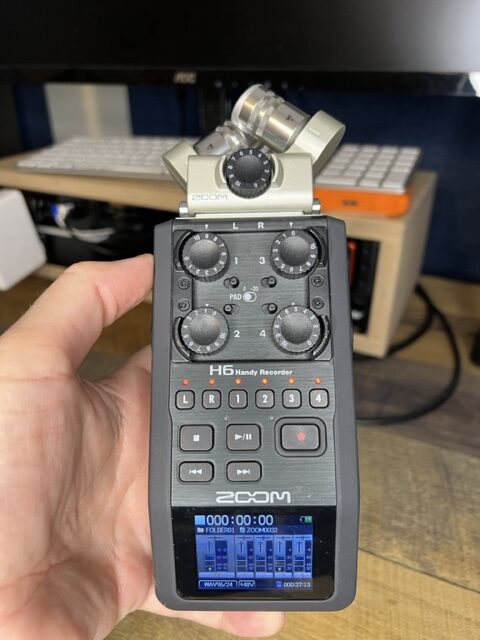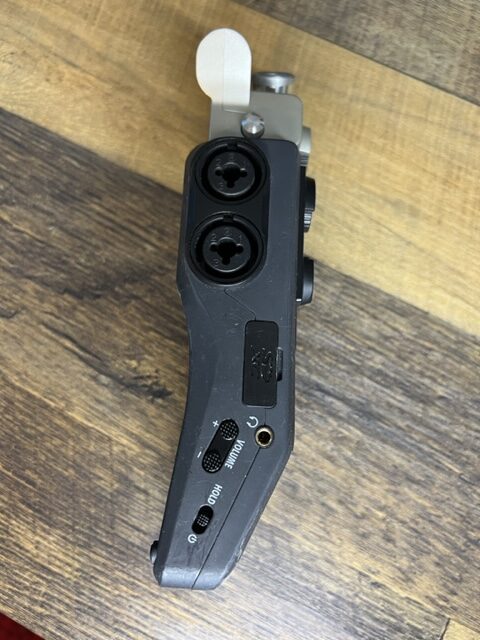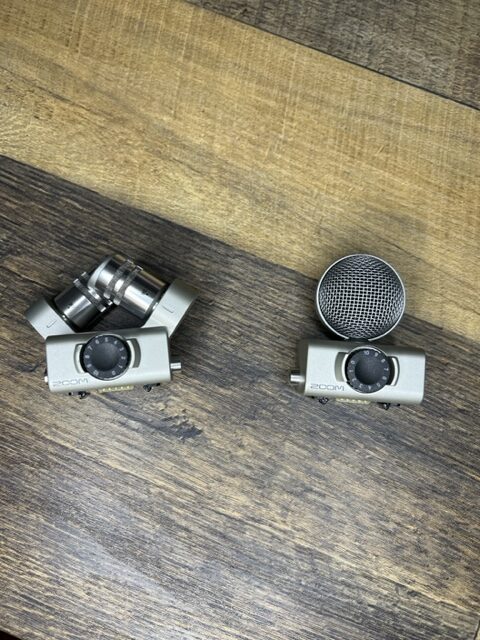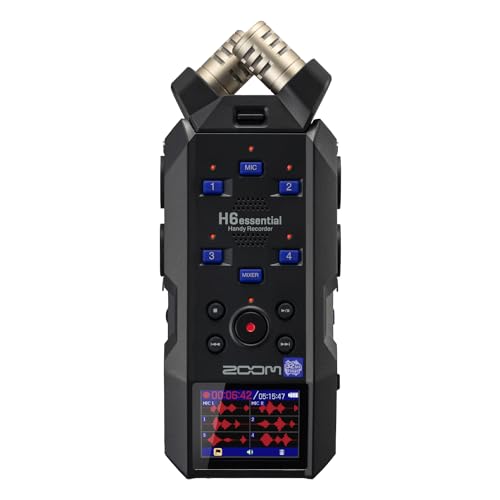Zoom H6: The Ultimate Portable Recording Tool for Podcasters
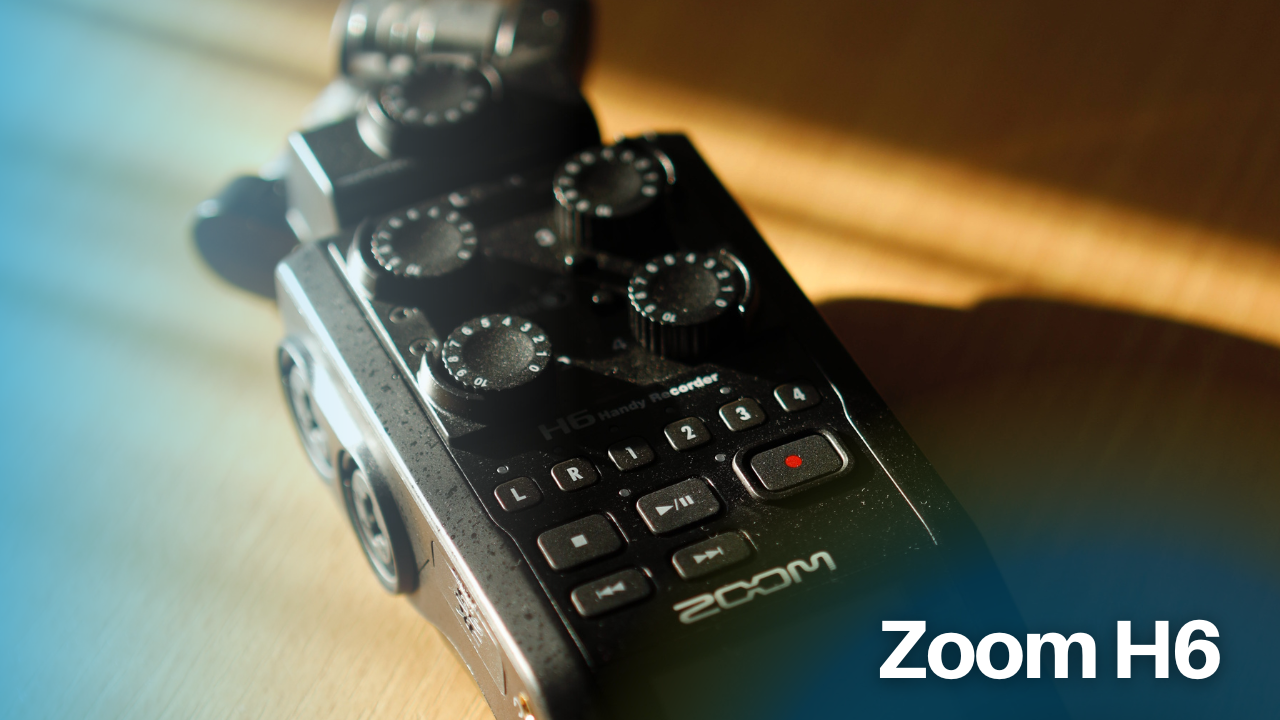
Say hello to the Zoom H6 – the ultimate tool for all your podcasting needs! This compact and portable recorder is perfect for recording high-quality audio on-the-go, without sacrificing sound clarity or professionalism.
With its versatile features and intuitive interface, the Zoom H6 is a must-have for any podcaster looking to take their audio game to the next level.
This post will cover the features of the Zoom H6 and highlight its use cases. So buckle up and get ready to upgrade your podcasting experience.
Oh, before we get into, I want to let you know that as an Amazon Associate, I earn from qualifying purchases. This is at no additional cost to you, and any money I make helps me keep pumping out content.
Let’s give it a go.
Zoom H6 Portability and Convenience
One of the main advantages of the Zoom H6 is its portability. You can toss it in your backpack with your microphones and cables, and have a fully functional podcast studio wherever you go.
It’s compact, lightweight, and has excellent battery life. You can even record with several friends, colleagues at the office, or someone’s house, and engineer the show with ease.
Four XLR Inputs
The Zoom H6 is capable of recording high fidelity audio, making it a great choice for podcasters who prioritize audio quality. Uhhh, which should be all podcasters.
Additionally, it has four XLR inputs, that means you can plug in and record four microphones at a time.
It’s perfect if you need to scale up and have inputs for additional guests. Hell, maybe you have a four-person podcast. Personally, that sounds like a shit show, but hey, if it works, it works.
Also, there’s an additional stereo microphone that’s detachable and mounts onto the top of the unit. It’s worth mentioning that I love using the stereo microphone for field recordings.
However, I don’t recommend you record a podcast by speaking right into the stereo mic.
Human voices are mono, meaning one source of audio. Speaking into a stereo microphone will capture your voice unevenly in the left and right mics.
This creates a weird sound in your headphones and speakers because one side will be louder than the other.
But again, the stereo mic is great for capturing soundscapes.
A Digital Recorder And Audio Interface In One
As a digital recorder, you can simply plug in your microphone(s), adjust your levels, and hit record. Therefore, it’s an excellent option for in-person interviews, roundtables, panels, or recording solo. But, the Zoom H6 can also double as an audio interface.
To do this, connect the H6 to your computer via USB, and it will be recognized by your computer as an audio input device. You can then select the H6 as your input source in your recording software of choice.
The benefit of using the H6 as an audio interface is that you can take advantage of its high quality microphone inputs.
This will produce that realllll nice audio.
Additionally, you can monitor your recording in real-time through the Zoom H6’s headphone output.
Connecting The Zoom H6 To A Camera For Video Podcasts
If you’re not filming your podcast, you need to be. The Zoom H6 is an ideal companion for your camera setup. You can integrate it with DSLRs, mirrorless cameras, and camcorders.
Fortunately, it’s easy to route the audio from your Zoom H6 into your camera for shooting a video podcast.
Here’s a step-by-step guide on how to do it:
Prepare your gear
You’ll need your Zoom H6 recorder, your camera, and a 3.5mm stereo mini-jack cable (also known as an aux cable).
Connect the microphone(s) to the Zoom H6
Attach your desired microphone(s) to the Zoom H6. Position the microphone(s) appropriately to capture the best sound quality.
Connect the Zoom H6 to the camera
Using the 3.5mm cable, connect the “Line Out” port on the Zoom H6 to the “Mic In” or “Audio In” port on your camera. This will route the audio from the H6 directly into your camera.
Adjust the camera’s audio settings
On your camera, go to the audio settings and set the input level to “Manual” or “External.” This will allow you to adjust the input level for the audio being received from the Zoom H6.
If available, enable “Audio Level Display” to monitor the levels visually. Adjust the input level on your camera to ensure the audio levels are within an optimal range.
All cameras are different, but this should get you most of the way there.
Monitor the audio
If possible, connect headphones to your camera’s headphone jack or to the Zoom H6 to monitor the audio during recording. This will help you ensure that the audio is being captured at the level you want.
Start recording
With everything set up, start recording on both the Zoom H6 and the camera. The audio from the H6 will be recorded directly into your camera’s video file, synching to picture.
By following these steps, you can effectively route the Zoom H6 into your camera, capturing high-quality audio for your video podcast.
The result will be a more professional and engaging listening experience for your viewers.
Is The Zoom H6 Right For Your Podcasting Needs?
In summary, if you’re a podcaster who wants a portable and versatile recording solution, the Zoom H6 is definitely worth considering.
Its high fidelity audio recording capabilities, multiple XLR inputs, and ability to function as both a digital recorder and an audio interface make it a top choice for podcasters who want an easy, great-sounding solution.
Key Features and Specifications
The Zoom H6 boasts a range of features that set it apart from other portable audio recorders on the market:
- Interchangeable input capsules, allowing for versatile recording in any environment
- Four XLR/TRS combo inputs with phantom power, enabling connection of a variety of microphones and instruments
- Up to 24-bit/96kHz recording capability, producing high-quality, professional sounding audio
- Built-in effects and processing tools, such as Compression, EQ, and Limiting
- A color LCD display that’s super easy to navigate
- The Zoom H6 records audio directly to an SD card. It supports SD, SDHC, and SDXC cards with capacities up to 128GB, providing ample storage space.
Zoom Microphone Capsules
The Zoom H6’s six interchangeable microphone capsules provides users with a range of recording options to suit different environments and applications.
These capsules include:
- XYH-6 X/Y capsule for high-quality stereo recording – great for foley and sounscapes
- MSH-6 MS capsule for Mid-Side recording – A field recording technique
- SSH-6 shotgun capsule for directional recording – great for video
EXH-6 dual XLR/TRS combo capsule for connection of external microphones and instruments. If you connect one of these to your Zoom H6 you’ll end up with six XLR/TRS inputs!
Each capsule can be easily swapped in and out of the recorder, making it simple to customize the recorder for specific recording situations.
To be honest, you won’t need these for podcasting. But if you’re planning on recording some field elements, or video, you can have a lot of fun configuring these capsules to capture quality audio in various environments.
Zoom H6 User Friendly Design
The Zoom H6’s compact and durable design makes it an ideal tool for on-the-go recording.
Its intuitive interface and color LCD display make it easy to navigate and adjust settings, while its rugged construction ensures it can withstand the demands of field recording.
In addition to its physical design, the H6 also offers user-friendly features such as:
- Pre-record function, allowing the recorder to capture audio up to two seconds before the record button is pressed
- Auto-record function, automatically starting recording when a certain sound level is detected
- Backup-record function, simultaneously recording a second, lower-level safety track to prevent the loss of important audio
Use Zoom H6 For More Than Just Podcasting
Although this post is about using the Zoom H6 for podcasting, it’s versatility and high-quality recording capabilities make it suitable for a range of audio applications, including:
- Field recording for film and video production
- Music production and songwriting
- Live sound recording
- Sound design and foley
Zoom H6essential: The Updated H6
Dun dun dun. There’s a new player in town.
As of March 5th, 2024, Zoom Corp has released an updated H6, called H6essential. We’ve yet to get our hands on one, but as always, our goal is to keep you in the loop when it comes to podcast gear.
So, here’s the skinny.
At first glance, the Zoom H6essential almost looks like a retro version of the original. The buttons look somewhat outdated. But the LCD screen looks awesome.
Zoom H6 Wrap Up
To sum it all up, here are the key reasons podcasters should consider the Zoom H6
Compact and Portable
Take your podcast studio with you wherever you go, thanks to the Zoom H6’s size, lightweight design, and excellent battery life.
High-Quality Audio
With its clean sounding preamps, your podcasts will sound clear and professional.
Versatile Recorder and Audio Interface
Use the H6 as a standalone digital recorder or as an audio interface.
Interchangeable Input Capsules
Customize your recording setup with various input capsules, perfect for adding sound design to your podcast.
Camera Integration
Route audio from the Zoom H6 into your favorite camera to add high-quality audio to your video.
User-Friendly Design
Easily navigate and adjust settings with the H6’s intuitive interface, and color LCD display.
Built-in Effects and Processing Tools
Fine-tune your sound before you hit record with the help of compression, EQ, and limiter tools.
Perfect for Various Applications
Not only great for podcasting, but the H6 is also suitable for field recording, music production, and live sound recording.
In a nutshell, the Zoom H6 is a fantastic investment for any podcaster looking to up their audio game and create professional-sounding content.
Give it a try, and experience the difference for yourself.
Zoom H6 Accessories
Other Blog Posts To Help You On Your Podcast Journey
- Epidemic Sound: The Best Royalty-Free music Library For Content Creators
- Maono PS22 Audio Interface: Quality Audio Production That’s Affordable
- Gain vs Volume: Nailing Microphone Levels For Better Podcasts
- The Complete Guide To Recording a Podcast With Riverside.fm
Connect With Us:
- The Podcast Haven Homepage
- Our YouTube
- TikTok
- Listen To Our Flagship Podcast CLIPPED on Apple Podcasts
- Listen To Our Flagship Podcast CLIPPED on Spotify

